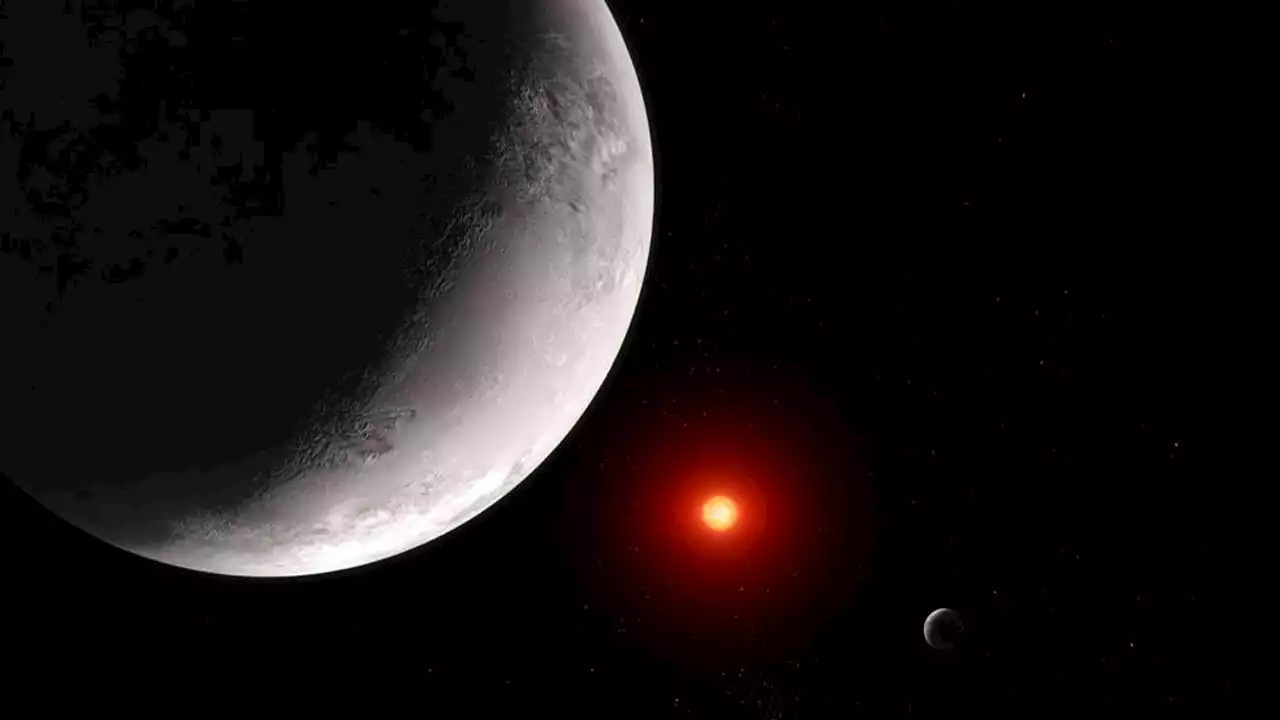Data from NASA's James Webb Telescope shows that the exoplanet TRAPPIST-1 c has either zero or very little atmosphere and the possibility of life is slim.
The research team observed TRAPPIST-1 c on four separate occasions as it orbited around a star to determine how much atmosphere it has.
If a planet has any atmosphere at all, it will redistribute heat from the dayside to the nightside, causing the dayside temperature to be lower than it would be without an atmosphere, NASA said. Zieba said the team’s research is consistent with the planet being a bare rock, with no atmosphere or the planet having less CO2 atmosphere than Earth or even Mars with no cloud.
The absence of any thick atmosphere suggests the exoplanet could have possibly formed with relatively little water, NASA said.
United States Latest News, United States Headlines
Similar News:You can also read news stories similar to this one that we have collected from other news sources.
 The Webb Space Telescope Just Zoomed in Super Close on an Alien PlanetThe James Webb Space Telescope just got a close look at TRAPPIST-1 c, a rocky exoplanet located roughly 40 lightyears away.
The Webb Space Telescope Just Zoomed in Super Close on an Alien PlanetThe James Webb Space Telescope just got a close look at TRAPPIST-1 c, a rocky exoplanet located roughly 40 lightyears away.
Read more »
 See and hear Stephan's Quintet in a whole new way | Digital TrendsData from the James Webb Space Telescope has been combined with data from other telescopes to create a new way to see and hear a famous galaxy group.
See and hear Stephan's Quintet in a whole new way | Digital TrendsData from the James Webb Space Telescope has been combined with data from other telescopes to create a new way to see and hear a famous galaxy group.
Read more »
Experts to explain what squids and space have in common at Houston Space Center for Cephalopod WeekExperts will explain what squids and space have in common at the Space Center Saturday
Read more »
 Artemis Accords: US signs deal with India to counter China in space raceTwenty-seven nations have signed the Accords thus far which set principles to govern the civil exploration and use of outer space.
Artemis Accords: US signs deal with India to counter China in space raceTwenty-seven nations have signed the Accords thus far which set principles to govern the civil exploration and use of outer space.
Read more »
 Russian space agency Roscosmos recruiting fighters for war against Ukraine: reportRussia's state space corporation calls for recruits to join the Uran volunteer battalion.
Russian space agency Roscosmos recruiting fighters for war against Ukraine: reportRussia's state space corporation calls for recruits to join the Uran volunteer battalion.
Read more »
 This company put a huge cell-tower-like satellite in spaceThe 693-square-foot satellite sent fast cell signals down to smartphones in Hawaii. The tech could be used to fill in coverage gaps in the US.
This company put a huge cell-tower-like satellite in spaceThe 693-square-foot satellite sent fast cell signals down to smartphones in Hawaii. The tech could be used to fill in coverage gaps in the US.
Read more »
